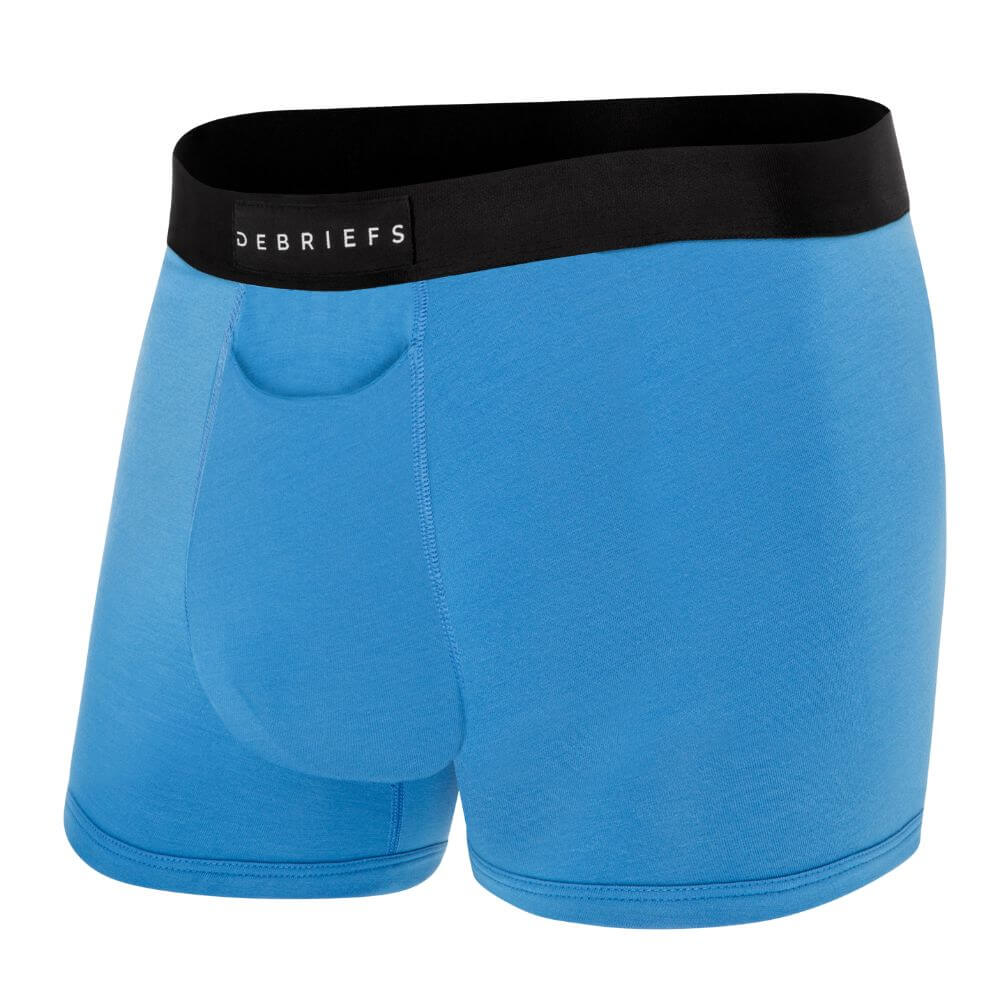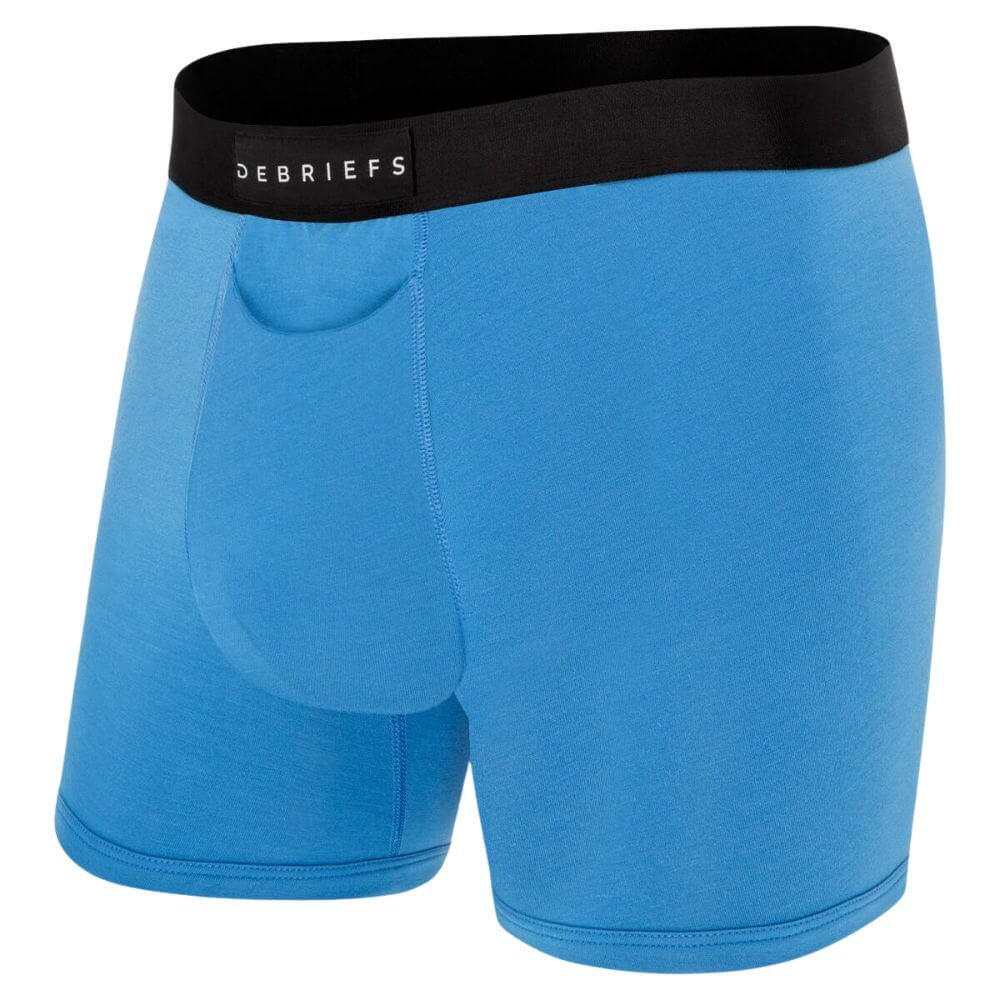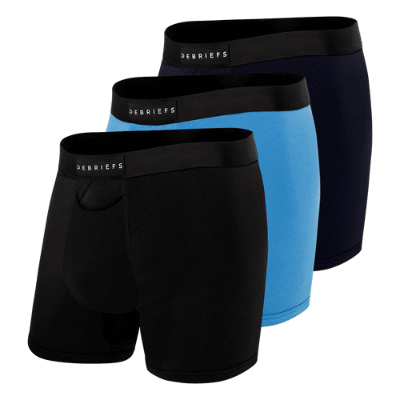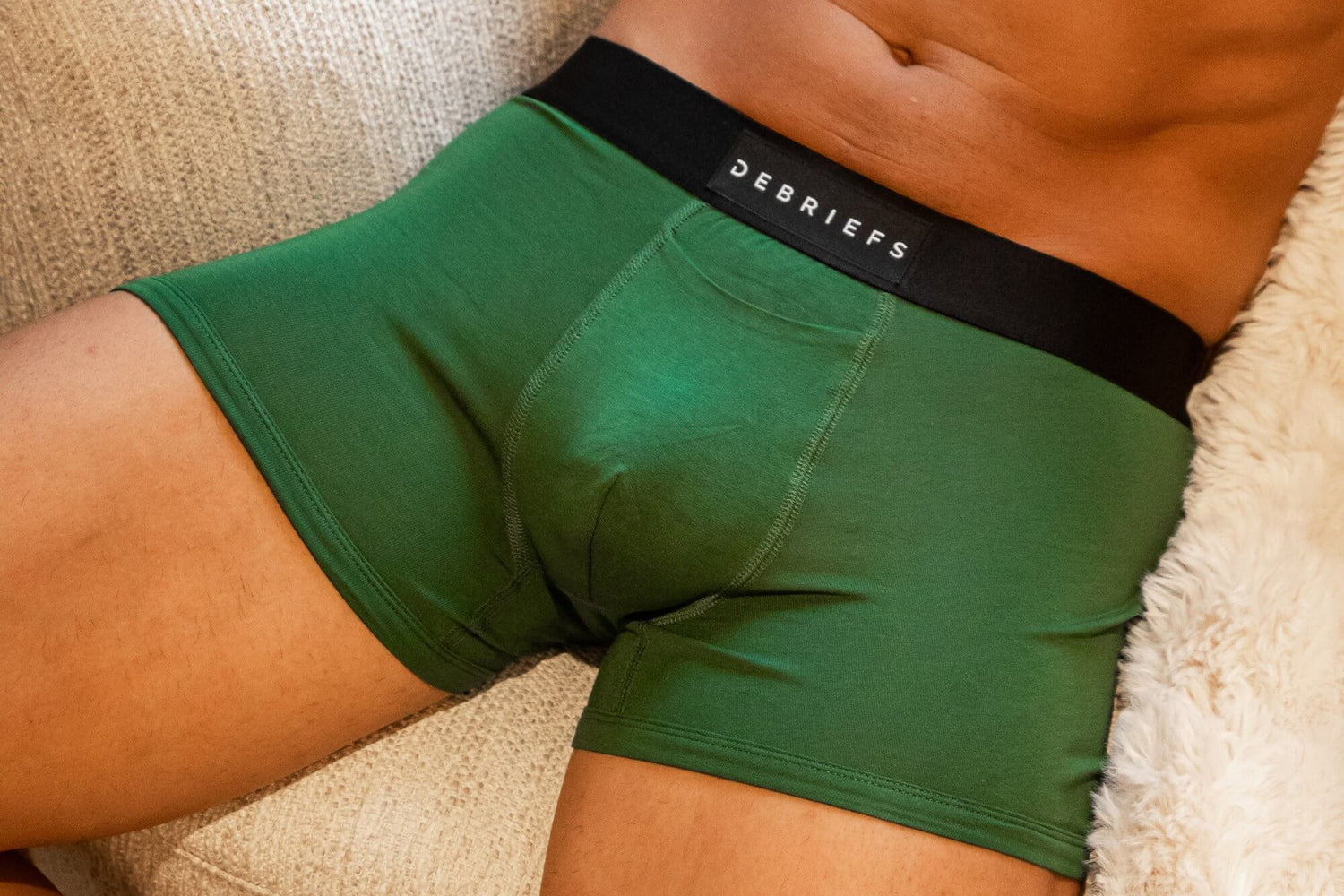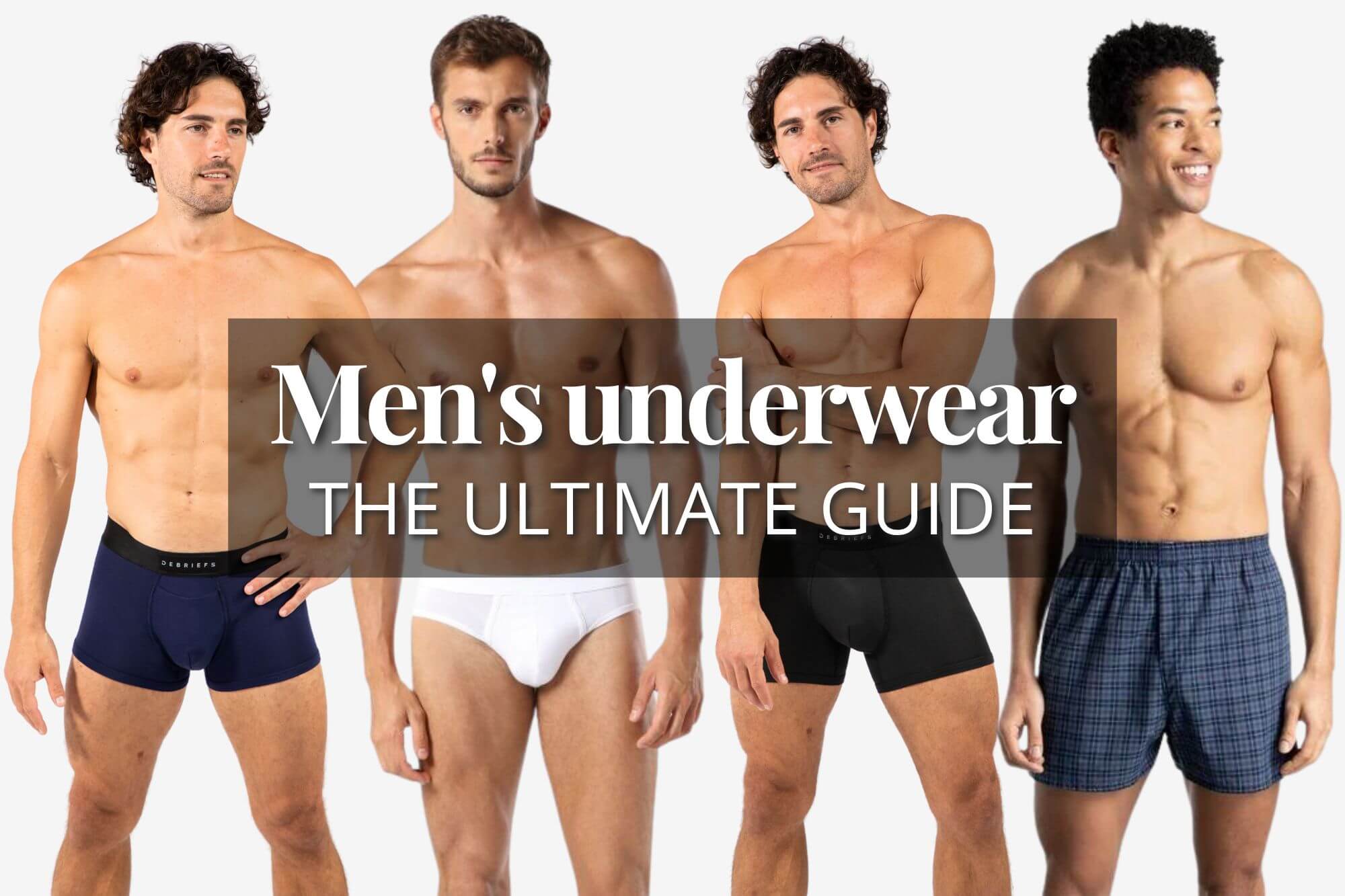You've finally made it to the urinal after queuing for ages, and you're absolutely busting. There's only 1 more hurdle to go... finding the escape hatch. It's the frantic scrummage that can separate the men from the boys, a true test of grace under pressure while you pretend to be fascinated by the grout on the tiles. We've all been there, so surely there's a better way by now!?
For something we use every single day, men's underwear has been weirdly resistant to actual innovation. Sure, we've moved past scratchy cotton and saggy waistbands, but the fundamental design? Pretty much the same for decades.
Until recently, anyway.
Horizontal fly underwear is quietly gaining ground among guys who've stumbled onto it, usually by accident, and then wondered why the hell it took so long to find. It's not revolutionary in a flashy way. There's no marketing blitz or celebrity endorsement. It's just... better. Genuinely, noticeably better in ways that matter when you're actually wearing the things.
So what's the deal with this design, and why should you care?
What Actually Is Horizontal Fly Underwear?
Let's start with the basics because this isn't exactly common knowledge yet.
Traditional men's underwear typically has a vertical fly. That's the opening on the side, usually positioned for right-handed access. Some have the Y-front design with its distinctive inverted Y shape. And then there's the no-fly camp, which seals everything up completely.
Horizontal fly underwear takes a different approach entirely. Instead of a side opening, you've got a horizontal access point across the top of the pouch. Think of it as a top-down entry system rather than a side door. Or, in classic Aussie terms, 'over the fence, not through the gate'.
The opening sits just below waistband level, integrated into the pouch structure. When you need to use it, you reach down through your trouser waistband or fly, and then through the horizontal opening. Straight shot. Left and right hand suitable. No weird angles or awkward fumbling.
When you're not using it? The overlapping fabric layers stay naturally closed thanks to gravity and the snug fit of the pouch. No buttons, no complicated keyhole shapes. Just fabric doing what fabric does best when it's properly designed.
How It Actually Works (And Why It Makes Sense)
Here's where it gets interesting, because the horizontal fly isn't just about the opening itself. It's about how that opening works with the entire pouch design.
A decent pair of horizontal fly underwear uses a contour pouch. This is basically an anatomically shaped pocket that provides natural support and separation. The pouch does the heavy lifting of keeping everything comfortable and in place.
The horizontal fly is then layered into this structure. Picture two overlapping pieces of fabric at the top of the pouch. When you need access, you simply pull one layer out in front (kinda like you're opening a bag). The rest of the time, the layers sit flat against each other, held closed by the natural tension of the fabric and the pressure from your waistband.
It's elegantly simple, which is probably why it feels so intuitive once you try it. You're working with gravity and natural body mechanics instead of fighting against them.
Why Traditional Fly Designs Fall Short
To really appreciate what makes horizontal fly underwear different, it helps to understand what's wrong with the alternatives. Because honestly, most of us have just accepted the flaws of traditional designs as "that's just how undies work."
The vertical fly has been the default for ages. It gets the job done, sort of. But it's inherently biased toward right-handed blokes. If you're left-handed, you're stuck with an awkward cross-body reach that feels completely unnatural. And after a few dozen washes, that side opening tends to lose its shape, creating the dreaded gape. You know the one. That permanent gap that shows through fitted trousers and makes you look like your underwear gave up.
Y-front designs solved some problems but created others. The inverted Y gives you more access options, which sounds good in theory. In practice, however, it's like solving a puzzle under pressure, especially through jeans or chinos. There's more structural integrity than a simple vertical fly, but the trade-off is complexity when you're in a hurry.
No-fly underwear takes the opposite approach. Seal it all up, maximise support, create a clean silhouette. Brilliant for support, genuinely terrible for convenience. Every bathroom break becomes a full belt-and-trouser operation. Fine at home, less ideal when you're 6 beers deep at the pub or stuck in a work meeting that's running overtime.
The horizontal fly borrows the best bits from each design while ditching the annoying parts. You get the security and support of a no-fly with the access convenience of a traditional fly, but without the awkward angles or gaping issues.
The Real Benefits (Beyond Just Being Different)
Sure, different is fine, but better is what matters. So what does horizontal fly underwear actually give you that justifies trying something new?
Access That Actually Works for Everyone
This might be the single biggest advantage, particularly if you're left-handed.
Traditional vertical flies are designed with right-handed access in mind. It's not a conspiracy, just a design default that stuck. But if you're a leftie, you know the awkwardness. You're reaching across your body at an unnatural angle, or you're using your non-dominant hand, which just feels weird.
Horizontal fly underwear is completely ambidextrous. Top-down access works identically whether you're reaching with your left or right hand. It's faster, more natural, and significantly more discreet. The kind of improvement that seems small until you experience it, and then you can't imagine going back.
Support That Stays Consistent
One of the most frustrating things about traditional flies is how they degrade. That vertical opening? After repeated washing and wearing, the fabric around it stretches out. The opening gets wider, the edges curl, and suddenly you've got a permanent breach in your underwear's security.
The horizontal fly design handles this completely differently. Because the opening is created by overlapping layers rather than a single stressed seam, it maintains its integrity far longer. The pouch structure keeps everything in place, and the layers stay flat and secure. No gaping, no curling, no awkward gaps showing through your trousers.
This isn't just about appearance (though that matters). It's about consistent support throughout the day. Your underwear shouldn't change performance between morning and evening just because you've been moving around.
The Hygiene Factor Nobody Talks About
Let's address something most underwear marketing completely ignores: bathroom hygiene.
Several blokes have reported that the straight-line access of a horizontal fly actually helps reduce post-pee dribble. The theory is that when you're not contorting/bending/maneuvering yourself to access a side fly, everything aligns more naturally. You get a cleaner finish with less leftover moisture.
Is this scientifically proven? Probably not. Is it a real quality-of-life improvement? Yes, I can confidently say that it is (horizontal fly underwear is all that I own nowadays).
Security During Movement
Whether you're commuting on a packed train, hitting the gym, or just crouching down to grab something off a low shelf, your underwear needs to move with you. The last thing you want is a wardrobe malfunction because your fly decided to pop open mid-squat.
The overlapping design of a horizontal fly provides excellent security during dynamic movement. The layers stay closed because they're held in place by the pouch structure and the tension from your waistband. It offers the same locked-down security as a no-fly design but with the option for quick access when you need it.
Horizontal Fly vs The Competition: An Honest Comparison
Let's break this down scenario by scenario, because how your underwear performs in real situations is what actually matters.
Speed and Convenience
Horizontal fly: Excellent. Fast, intuitive, direct access that works the same every time.
Vertical/Y-front: Fair to good, depending on your dominant hand and how worn the fabric is. Can require fumbling, especially through multiple layers of clothing.
No-fly: Poor for quick access. You're undoing your belt and waistband every time. Not ideal when there's a queue at the footy.
Support and Structure
Horizontal fly: Excellent when paired with a proper contour pouch. Everything stays in place without feeling restrictive.
Vertical/Y-front: Good initially, but degrades over time as the opening loses shape. Support can become inconsistent.
No-fly: Excellent. Maximum support with no structural weak points. But you pay for it in convenience.
The Gaping Problem
Horizontal fly: Very low risk. The overlapping layers naturally stay closed and maintain their shape.
Vertical/Y-front: High risk, especially after multiple washes. The gape is real and it's annoying.
No-fly: None. Can't gape if there's no opening, but that's cold comfort when you're desperate for the loo.
Real-World Scenarios
Let me paint you a few pictures.
The office bathroom: You're in a suit, between meetings, need a quick stop. The horizontal fly wins here. No belt adjustment needed, just a fast top-down access through the fly that gets you in and out efficiently. Professional, discreet, done.
Saturday night at the pub: Crowded bathroom, questionable cleanliness, personal space is a distant memory. The last thing you want is to be wrestling with a stubborn vertical fly or completely undoing your jeans. The horizontal fly's quick access is a genuine advantage when you're operating in tight quarters with questionable coordination.
The gym: You're mid-workout, heart rate elevated, everything's feeling a bit... compressed. A no-fly offers great support but requires full shorts-down access. The horizontal fly gives you that same support with the option for a quick bathroom break without having to strip through layers. When you're sweaty and in a hurry, that matters.
Long-haul flight: Trapped in economy, trying to minimise your time in that coffin-sized bathroom. A gappy vertical fly is uncomfortable and insecure. A no-fly feels restrictive after hours of sitting. The horizontal fly provides secure, comfortable support that doesn't get in your way when you need to move quickly in a confined space.
Why Fabric Choice Makes or Breaks the Design
Here's the thing about horizontal fly underwear: the design is only half the story. You could have the most brilliantly engineered fly in the world, but if the fabric is rubbish, you've wasted your money.
Cheap cotton will eventually sag, synthetic blends can feel like wearing a plastic bag, and poor-quality elastane loses its stretch after a few washes. This is where premium fabrics like MicroModal genuinely earn their keep.
What Makes MicroModal Different
MicroModal is derived from beechwood trees through a process that's genuinely more sustainable than most fabric production. But the environmental credentials aren't why it's brilliant for underwear. It's brilliant because of how it performs.
The fabric is about 50% more absorbent than cotton, which means it actively wicks moisture away from your skin instead of just sitting there damp. In Australian heat, this is non-negotiable. Whether you're sweating through a summer commute or working up a sweat at the gym, MicroModal keeps you noticeably drier and cooler.
It's also ridiculously soft. Way softer than cotton, with a silky-smooth texture that feels incredible against skin. Not in a "luxury for the sake of it" way, but in a "this genuinely improves my day" way.
Shape Retention and Anti-Chafe Properties
Remember that gaping problem with vertical flies? MicroModal, especially when blended with a small percentage of elastane, has exceptional shape retention. It stretches when you move, then returns to its original form. Every. Single. Time.
This is crucial for horizontal fly underwear because the overlapping layers need to maintain their tension to stay closed properly. With MicroModal, your fly stays snug and secure through countless washes. The pouch doesn't sag, the legs don't ride up. It all just works, consistently.
The silky texture also makes it brilliant for preventing chafing. Even on long, active days, there's no irritation or rubbing. Combined with the secure fit of a horizontal fly design, it's about as close to "going commando" as you can get.
The Sustainability Angle
Look, it's 2025. We should probably care where our stuff comes from.
MicroModal, particularly from certified producers like Lenzing, is made in a closed-loop system that recycles over 99% of the water and solvents used in production. Compare that to bamboo fabric (which sounds eco-friendly but often involves harsh chemical processing) or conventional cotton (which is a water-guzzling nightmare), and MicroModal starts looking pretty good.
It's not perfect. Nothing is. But it's a significantly better choice than most alternatives, and it happens to perform better too. Win-win.
Choosing the Right Horizontal Fly Underwear
Convinced it's worth a try? Smart move. Here's what to look for to make sure you get a pair that actually delivers.
Fit: Snug But Never Restrictive
The goal is supportive comfort, not compression. Your horizontal fly underwear should fit snugly enough to keep the fly layers closed and the pouch supportive, but never so tight that it restricts movement or digs into your skin.
Check the brand's size guide properly. If you're between sizes, consider sizing up. A slightly looser fit that's comfortable beats a technically correct size that's uncomfortably tight.
Pouch Design Matters More Than You Think
Not all pouches are created equal, and this is where many brands cut corners.
Look for a contoured (sometimes referred to as 3d) or anatomical pouch design. This provides natural shaping and separation rather than just smashing everything together. Proper pouch design improves airflow, prevents squashing, and works in harmony with the horizontal fly to provide consistent support.
Pay attention to seam placement and type, too. Flatlock stitching is your friend. It lies flat against the skin and prevents the irritation you get from cheap overlocked seams. Quality brands spend time engineering seam placement to avoid pressure points. For example, a seam straight down the middle of the pouch can sometimes irritate blokes.
Care Instructions for Longevity
Premium underwear deserves a bit of respect if you want it to last.
Cold wash, gentle cycle. That's your baseline. Hot water breaks down elastic fibres and can fade colours. Harsh detergents and fabric softeners are the enemy of technical fabrics like MicroModal. They leave residue that clogs the fibres and reduces moisture-wicking performance.
Skip the tumble dryer entirely. Line dry in the shade if possible. The heat from dryers degrades elastane and can cause shrinkage, even with quality fabrics. Air drying preserves the softness and elasticity for years.
Treat your good underwear well, and it'll return the favour with consistent performance and comfort.
The Bottom Line on Horizontal Fly Underwear
This isn't about jumping on some trendy bandwagon or buying into marketing hype. Horizontal fly underwear is simply better-designed underwear that solves real, everyday problems in ways that traditional designs don't.
It's more accessible for both left and right-handed blokes. It maintains its shape and security far better than vertical flies. It provides the convenience of a traditional fly with the support of a no-fly design. And when made from premium fabrics like MicroModal, it offers all-day comfort that genuinely improves your daily experience.
The best innovations are often the least flashy. They're the small design changes that make you wonder why everyone wasn't doing it this way all along. That's horizontal fly underwear. Not revolutionary, just smartly evolved.
FAQs About Horizontal Fly Underwear
What exactly is horizontal fly underwear?
Horizontal fly underwear features an opening that runs across the top of the pouch rather than down the side. It provides top-down access, which most guys find more intuitive and convenient than traditional side openings or Y-front designs.
Is horizontal fly underwear better than vertical fly designs?
For most blokes, yes. The horizontal fly works equally well whether you're right or left-handed, which is a massive improvement over side-opening designs. It's also far less prone to gaping, provides easier access when nature calls, and it provides more consistent support throughout the day because the overlapping layers that maintain their shape better than a single vertical seam.
Can horizontal fly underwear help with post-pee dribble?
Surprisingly, it can. The straight, top-down access requires less awkward repositioning and fumbling, which many users report leads to a cleaner finish. It's not a miracle cure, but the more natural alignment genuinely helps reduce those annoying last few drops.
Is horizontal fly underwear secure enough for sport and gym workouts?
Absolutely. When combined with a proper contour pouch and quality fabric, a horizontal fly stays securely closed during intense activity. The overlapping layers and supportive fit prevent any accidental openings, whether you're running, squatting, or doing yoga. You get the security of a no-fly with the convenience of having an access option.
What's the best fabric for horizontal fly underwear in Australian conditions?
MicroModal is hands-down the best choice for our climate. It's exceptionally breathable, wicks moisture away from your skin about 50% better than cotton, and stays soft and comfortable even in humid conditions. The excellent shape retention also ensures the horizontal fly maintains its structure and security, wash after wash. For Australian heat and humidity, it's genuinely hard to beat.

